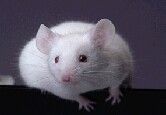Role of Homeoprotein Explored in Visual Plasticity in Mice
The homeoprotein Otx2 plays a role in postnatal maturation of parvalbumin cells and activates visual cortical plasticity in mice, according to research published in the Aug. 8 issue of Cell.

MONDAY, Aug. 11 (HealthDay News) -- The homeoprotein Otx2 plays a role in postnatal maturation of parvalbumin (PV) cells and activates visual cortical plasticity in mice, according to research published in the Aug. 8 issue of Cell.
Sayaka Sugiyama, Ph.D., of the Riken Brain Science Institute in Saitama, Japan, and colleagues report that they found little Otx2 protein at 19 days after birth, but by days 28 to 30, it was increasingly concentrated in PV cells as PV expression grew, then persisted into adulthood. After infusing Otx2 into immature visual cortexes, they found strong Otx2 signal in PV cells throughout the treated visual cortex.
During infusion of recombinant Otx2 protein into the visual cortex starting at day 17, responsiveness prematurely shifted after brief monocular deprivation to the open, ipsilateral eye, compared to treatment with vehicle, after which visual responses from the closed, contralateral eye stayed strong, the researchers report.
"Direct Otx2 gain- or loss-of-function, respectively, promoted or hindered both the expression of PV-cell molecular constituents and ocular dominance plasticity. Surprisingly, these bidirectional actions were non-cell-autonomous. Selective deletion of the Otx2 gene outside cortical interneurons successfully removed Otx2 protein from PV-cells. Moreover, intercepting Otx2 by infusion of antibodies or blocking its synthesis by short-interfering RNA injection into the eye prevented critical period plasticity. It is intriguing that passage of extra-cortical factors may establish the milieu for cortical plasticity in vivo. Robust Otx2 mRNA expression is observed in the retina, lateral geniculate nucleus and superior colliculus, demarcating a possible conduit for propagation along the visual pathway," the authors write.
AbstractFull Text (subscription or payment may be required)
Copyright © 2008 ScoutNews, LLC. All rights reserved.